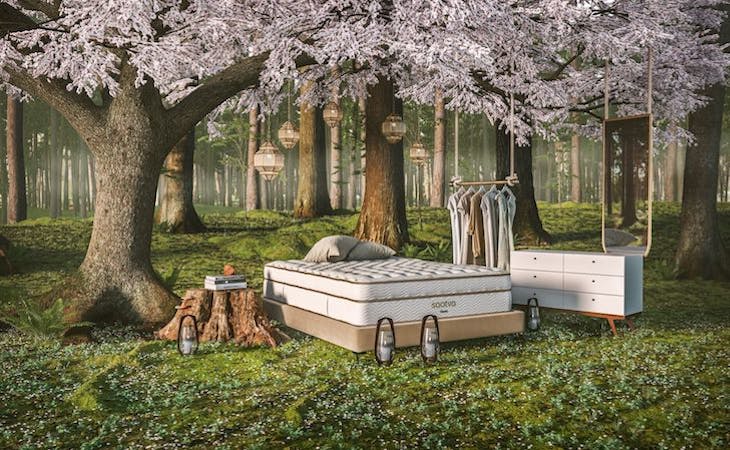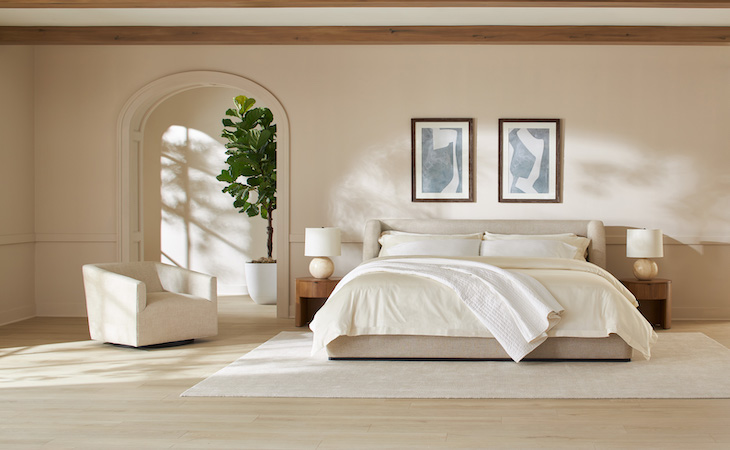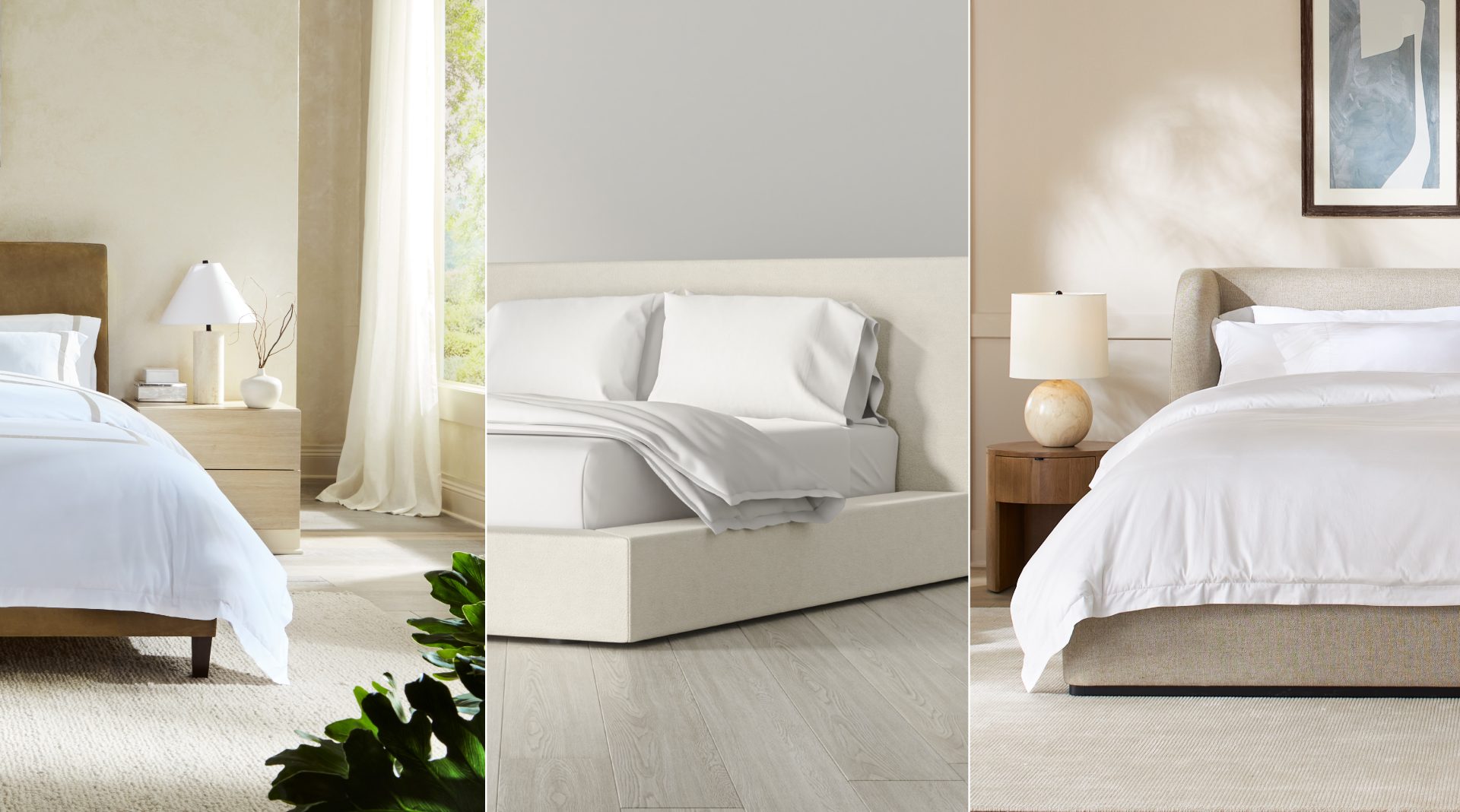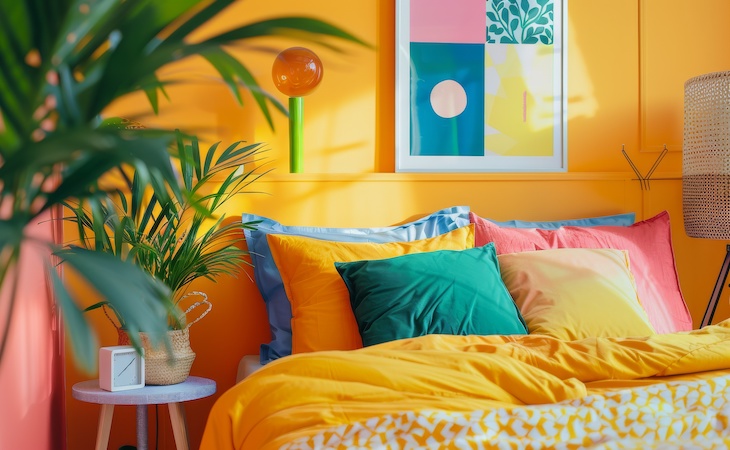For the past few years, a concept called “hygge” has topped the trends. It’s the Danish and Norwegian approach to all things cozy, embracing warm, thick textures, fragrant candles, and a general feeling of cozy togetherness while spending time indoors. Although hygge proves to be especially popular during the winter months, Scandinavians practice it all year round.
But there’s another Scandinavian concept that’s rising in popularity in the United States right now. It’s called “friluftsliv” (pronounced “free-loofts-liv”), and it’s the idea of spending time outdoors, no matter how frightful the weather is. In English, it translates to “outdoor life.” More specifically, Susan Serra, certified kitchen designer and president of Susan Serra Associates, Inc., translates the friluftsliv meaning as “free-air-life.”
Although this ideology is rooted in the outdoors, it can be represented indoors as well—particularly in your bedroom. Serra is here to elaborate on friluftsliv and share how to capture the vibe in your sleeping space.
What is friluftsliv?
Serra, who has family in Denmark and Norway and has visited frequently, says that friluftsliv is nothing new to the Scandinavians.
“They’ve been enjoying the great outdoors in every kind of weather for centuries,” she says. “In practice, it’s about enjoying nature however you want to, whether it’s venturing into the woods to cross-country ski, hike, dine around an outdoor fire, take a swim in the lake in winter as some in my Norwegian family do, or just ‘be’ outdoors for a while. The outdoors nourishes the soul as only nature can.”
It’s become a big trend for 2021, with Etsy even including it in its annual trend report. Many people believe this is a direct result of the difficulties we faced throughout 2020.
“Since the pandemic has forced most of us to remain home for many months, the great outdoors is one of the very safest places to go,” notes Serra. “People are reawakened to the natural beauty right in their backyards and surrounding towns and regions.”
Friluftsliv differs from hygge because it doesn’t focus as much on coziness indoors, and it’s “more simplistic,” as Serra puts it. “It is the connection with nature that helps us connect with ourselves and with those we are with as we bond with nature,” she says.
Related: 4 ways to bring Japandi design into your bedroom
Friluftsliv bedroom design tips
At its heart, friluftsliv encourages people to get out in nature as a healing balm. And that can do wonders for your sleep. “Fresh air is one of the best tonics there is for a restful, deep sleep,” Serra says. “Mind and body thrive from being outdoors, and it’s that ‘good tired’ we feel when we finally lay down in bed.”
While it’s good to get fresh air whenever you can, even on the chilliest of days, the spirit of friluftsliv can also be incorporated into your interiors so that nature is never far from you.
Serra says that with a little planning and inspiration from nature, your bedroom can become a “soulful experience” where at the beginning and end of the day “you are surrounded by the beauty of nature.”
Here are her top six tips for weaving friluftsliv touches into your bedroom.
Hang artwork that celebrates nature
“One of my favorite ways to bring the outdoors into the bedroom is to add a very oversized piece of art of an outdoor scene on the wall,” Serra says. In her bedroom, Serra has a large painting of a coastline. “Every single day, I am drawn to it, and its size envelops me inside the painting,” she says.
Decorate with rustic elements
Serra says that to harness a friluftsliv feel in a bedroom, “rustic elements” are key. She lists seashells, rocks, driftwood, and dried beach grasses as possibilities. “Put them in glass containers and change them as the mood suits for a fresh, natural look,” she suggests.
Look to color
A color palette can be inspiring in any space, and it’s certainly true in a bedroom. Want to nod to nature through your bedroom color choices? “Often, the colors of a bedroom might be soft blues and creams, channeling sky, water, and clouds,” says Serra. “Other stronger colors such as rich greens, browns, and grays add the stimulus of being immersed in the forest.”
Invite in natural light
Even if you’re not outdoors, natural light pouring in through a window can suddenly transport you to your favorite outdoor locale.
“To experience as much natural light as possible, enlarge bedroom windows, then add a door and small deck to sit outdoors at sunrise and sunset, to look at the stars or at a storm coming in,” advises Serra.
She also recommends painting the ceiling in a soft semi-gloss finish. “The soft glow while you are in bed from the windows is delightful and stimulating,” she says. “Last, for adding light, add an arrangement of mirrors that reflect the outdoors from adjacent windows to bring even more of the outdoors in.”
Cool the temperature
Serra touches upon a concept that’s been long held by sleep experts: a cooler bedroom temperature can make for better sleep.
“A chilled room with down comforters and pillows is, in my opinion, the very best way to get a good night’s sleep,” she remarks. “Down evens the body temperature, and it’s all you need to feel comfortable without heavy blankets and covers.”
Focus on texture
Serra says that a sisal or jute rug is a great way to bring natural texture into a bedroom. She notes that another way to layer in texture, warmth, and interest is through antique pieces “with their beautiful patina that adds a richness of the passage of time.”
Serra says that vintage, handmade Swedish rugs, something that she’s an expert in, can “provide color, style, and texture to the bedroom.”
Not catching adequate Z’s? It may be time to switch things up in the bedroom. Here’s how to design your bedroom for optimal sleep.




